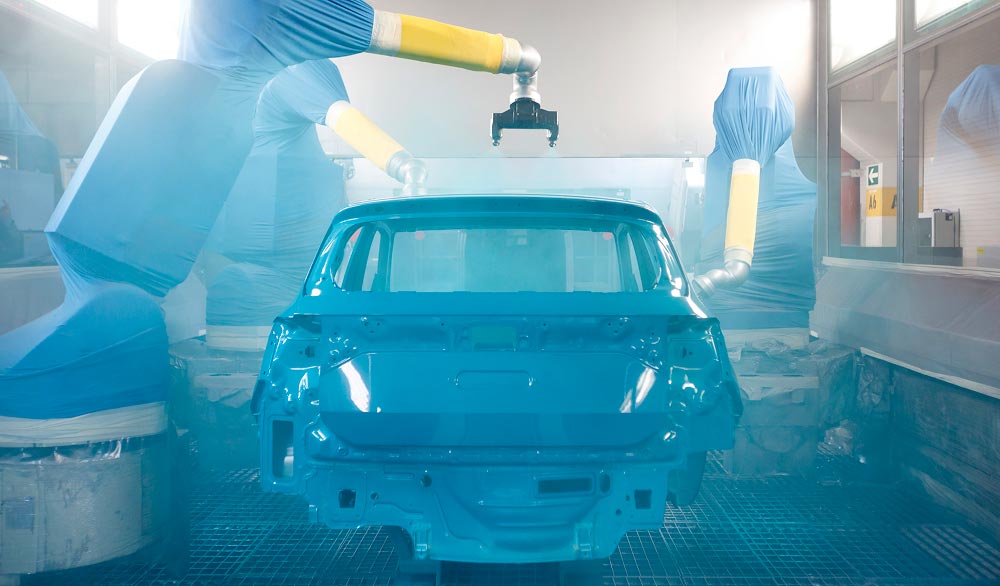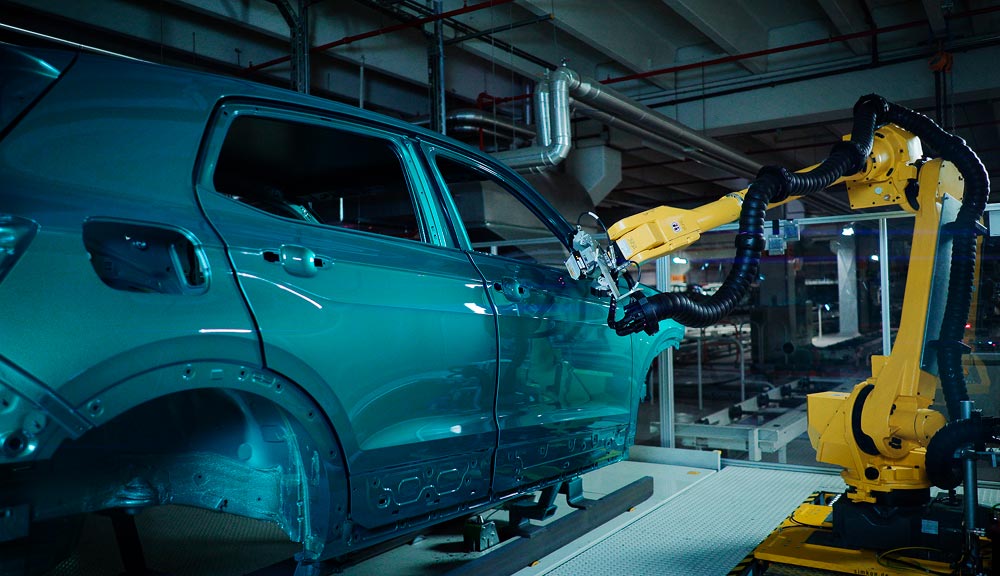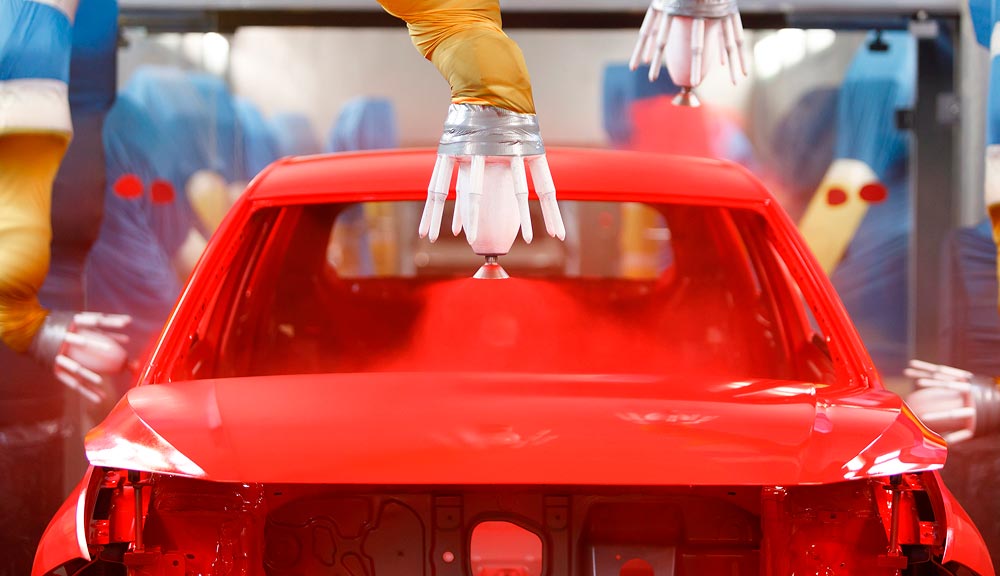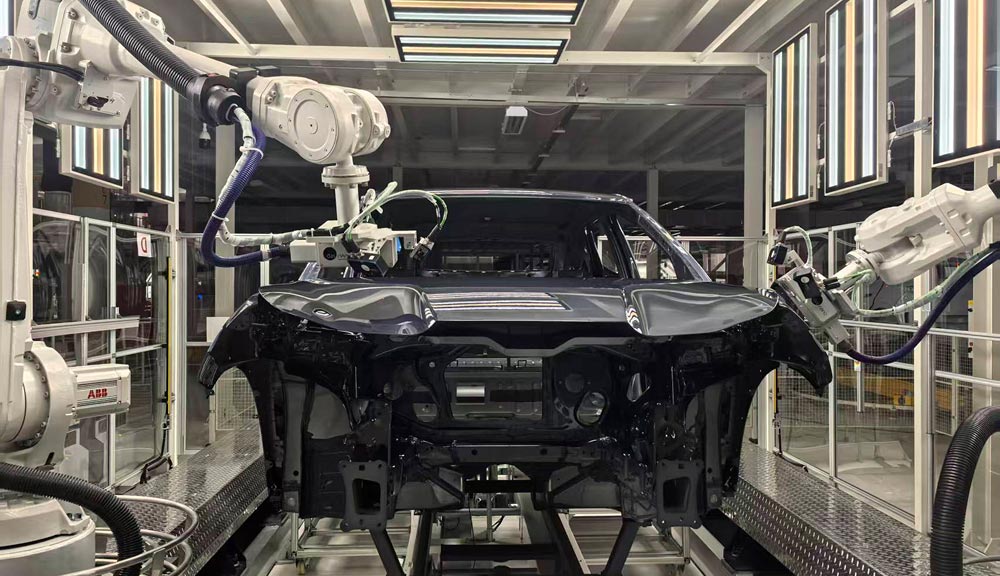The automotive industry is under increasing pressure to reduce its carbon footprint, boost efficiency, and curb resource usage. While the transition to electric vehicles dominates headlines, sustainability in vehicle fabrication—especially in paint shops—is a less visible but equally critical battleground.
Paint shops: hotspots of energy, water and material use
Paint shops account for approximately 65% of a factory’s total CO₂ emissions and represent the largest single consumer of energy (<50%), water (>40%), and solvents (>80%) in vehicle manufacturing. According to Stellantis ‘Paint in Numbers‘, its paint shops achieved a 27% reduction in energy use vs. 2021 and aim for 50% by end‑2025, targeting just 321 kWh per vehicle. At its Vigo plant alone, energy consumption dropped by ~40 kWh/vehicle, cutting CO₂ emissions by 25% thanks to the new 4WET painting process.
SEAT (Martorell), for example, reports that they have also achieved remarkable reductions since 2010: 70% lower emissions overall, 55% less water usage, 78% fewer waste, and 45% reduction in solvent emissions.
Toyota aims for zero emissions at its plants by 2050, integrating solar, wind, and geothermal energy in facilities like Tsutsumi (Japan). BMW has cut CO₂ per vehicle by over 70% since 2006 and operates AI-optimized, solar-powered plants such as San Luis Potosí in Mexico. Mercedes-Benz reports a 75% cut in factory emissions by 2024 and plans 100% renewable energy usage across global operations by 2039. Volkswagen, through its Think Blue Factory. initiative, is also advancing sustainable manufacturing. A standout example is VW Navarra, which has implemented more than 400 efficiency measures since 2011, reducing its environmental impact per vehicle by over 40%. These examples highlight a widespread industry shift: decarbonizing production is a global concern shared across all major OEMs.
Why precision paint thickness measurement matters
Even small inefficiencies in coating thickness, over hundreds of thousands of cars, add up to significant material waste and energy overuse. That’s where das‑Nano’s technology plays a pivotal role. Our terahertz-based, contactless paint thickness measurement system reads every layer thickness in multilayer coatings in real time with ±1 μm precision. This capability aligns directly with automakers’ sustainability goals:
- Reduce material waste by avoiding over‑application of coatings while maintaining top quality finish
- Prevent reworks or defects, saving materials, energy and time
- Enable energy-efficient paint processes by ensuring correct layer thickness from the first pass
Because paint shops are major carbon emitters, accurate in-line inspection of car body coatings becomes a key efficiency lever and decarbonization enabler.
How OEMs are transforming paint shops—and why das‑Nano fits in
Stellantis is rapidly rolling out its 4WET painting architecture, using fewer curing ovens and eliminating redundant bake cycles—delivering up to 30% energy savings per vehicle. Similarly, SEAT’s results demonstrate that systemic optimizations—such as water recycling and solvent reductions—can lower even long‑standing high‑impact operations by over half.
These transformations demand industrial-grade measurement tools that can deliver traceable quality without slowing production. Automakers need precise, automated inspection embedded into paint lines to validate every coating layer while maximizing throughput.

How das‑Nano supports OEM sustainability
Our solution is designed with this exact use case in mind:
- Real-time, inline measurement enables paint lines to adjust coating process immediately
- Multi-layer and high sensitivity detection supports modern systems like four‑wet processes and ultra‑thin coatings
- Automated integration with robots ensures consistent measurements and accuracy at scale

At Volkswagen Navarra, the implementation of das‑Nano’s Irys system is not only improving coating quality since 2020 24/7 non-stop — it’s also delivering measurable sustainability gains. With just one Irys unit, the plant reduces 50 kWh per car in the painting process. That’s over 16 GWh saved per year, and more than 7,000 tons of CO₂ emissions avoided annually. These aren’t estimates or theoretical benefits — they’re real-world results, achieved through the application of precise, production-grade technology. As the automotive industry pushes for lower emissions and smarter operations, solutions like Irys prove that sustainability and performance are not mutually exclusive — they’re mutually reinforcing.
Summing up: paint shop decarbonization needs precision measurement
- Paint shops are critical emission points—responsible for ~65% CO₂ emissions in vehicle manufacturing plants
- OEMs are innovating: 4WET, electrification, solvent reuse, water reductions
- das‑Nano technology bridges sustainability goals with production needs
- Real-time, multi-layer precision → less use of materials, less waste, reliable quality, energy savings
At das‑Nano, we provide the measurement backbone OEMs need to meet their net‑zero goals.
If you’re an OEM, Tier‑1 supplier, or paint shop manager evaluating sustainability strategies, our technology delivers measurable improvements today—and positions you for further decarbonization tomorrow.




